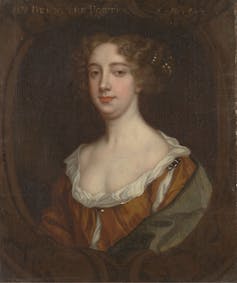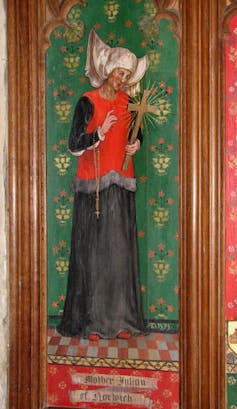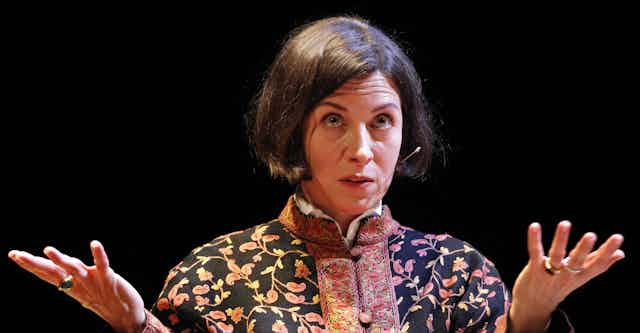Speculation is rife as to who will win the Baileys Women’s Prize for Fiction. The prize, which launched as the Orange Prize in 1996, has a distinguished list of former winners, including Kate Grenville, Lionel Shriver, Chimamanda Ngozi Adichie, and Rose Tremain. The shortlist for 2014 maintains this tradition of excellence.
Yet the prize is not without its critics. The feminist scholar and journalist Germaine Greer, and one of the most distinguished of contemporary British writers, A S Byatt, are not fans. Many of those who are sceptical of the value of a competition restricted to women entrants point out that a male-only prize would generate widespread outrage. In this light, a prize for women writers seems an example of reverse sexism.
And indeed, we might argue that reverse discrimination is not only unacceptable but also unnecessary. Women writers have recently done very well in the most distinguished literary competitions. Alice Munro was awarded the Nobel Prize in Literature. Eleanor Catton won the Man Booker Prize. Abi Curtis and Lucy Wood received Somerset Maughan Awards. And Tanya Harrod won the James Tait Black Prize for biography. And that’s all last year.
Many writers who happen to be women do not identify with the term “women writers”. They see themselves simply as writers, and not part of any sort of distinct tradition. They don’t think of their work in relation to what we might call their literary foremothers, and they don’t think of themselves as writing from a specifically gendered perspective, or about specifically gendered topics. They don’t write only for other women. To do so, to many writers, would seem overly prescriptive. They think that the best writers should transcend the limitations of gender.

But one might argue that the reason many women writers don’t see themselves as part of a tradition of women’s writing is that such a tradition is just not discussed. Many are unaware that one even exists. And this is a problem.
Most people interested in literature are aware of the female literary greats from the early 19th century onwards: from Jane Austen and the Brontë sisters through to Virginia Woolf and beyond. A few are aware of earlier writers such as the Restoration dramatist Aphra Behn or the late 16th to early 17th century poet, Mary Sidney. But I’m not sure that many people would be able to name any earlier female writers in the English literary tradition. This is certainly not the same in the case of men.
The dark ages
The Middle Ages have been referred to as “the dark ages” of women’s literary history. But the surviving evidence of women’s writing and women’s engagement with literary culture from the medieval period makes fascinating reading. Clare A Lees and Gillian R Overing, for example, have argued that a woman called Hild, Abbess of Whitby, played a key role as patron of the poet Cædmon, whose seventh century Hymn is widely seen as the origin of English literary history.
Anglo-Saxon women’s religious houses were centres of literary production. And even if we cannot prove beyond all doubt that female voiced Old English elegies such as Wulf and Eadwacer or The Wife’s Lament were written by women, something some scholars consider to be possible, we do know that English nuns wrote letters and poetry in Latin, and some of this material has survived.

In the post-Conquest period, more works by known women have come down to us. A high proportion of this material is religious in content, both because religious women were more likely to be educated, and because it was more acceptable for women to write about religious topics. The most well-known examples are Julian of Norwich’s accounts of her mystical visions (the reason why Julian has an apparently male name is not known, but it is possible that this is simply a variant spelling of Gillian), or The Book of Margery Kempe, a spiritual autobiography of sorts, written down by dictation on behalf of its non-literate author.
But in this era in English, and British, literary history, it would be a mistake to focus only on works written in English. To do so would exclude, for example, the wonderful animal fables and short narrative poems written in French in the 12th century by a woman called Marie, who seems to have been connected to the court of Henry II. One of Marie’s tales, Bisclavret, is concerned with a virtuous werewolf, which may remind us of J K Rowling’s Remus Lupin.
And such a focus would also exclude the 15th century Welsh poet, Gwerful Mechain. Mechain wrote an erotic poem in celebration of women’s genitals that in many respects anticipates Eve Ensler’s The Vagina Monologues, a play which continues to shock people today.
This is literature from the deep past that certainly has the potential to resonate with contemporary readers. It represents a tradition with which contemporary writers should be proud to align themselves. So let’s remember the past whilst we laud Baileys Women’s Prize for Fiction for ensuring that the tradition of women’s writing has a future.

